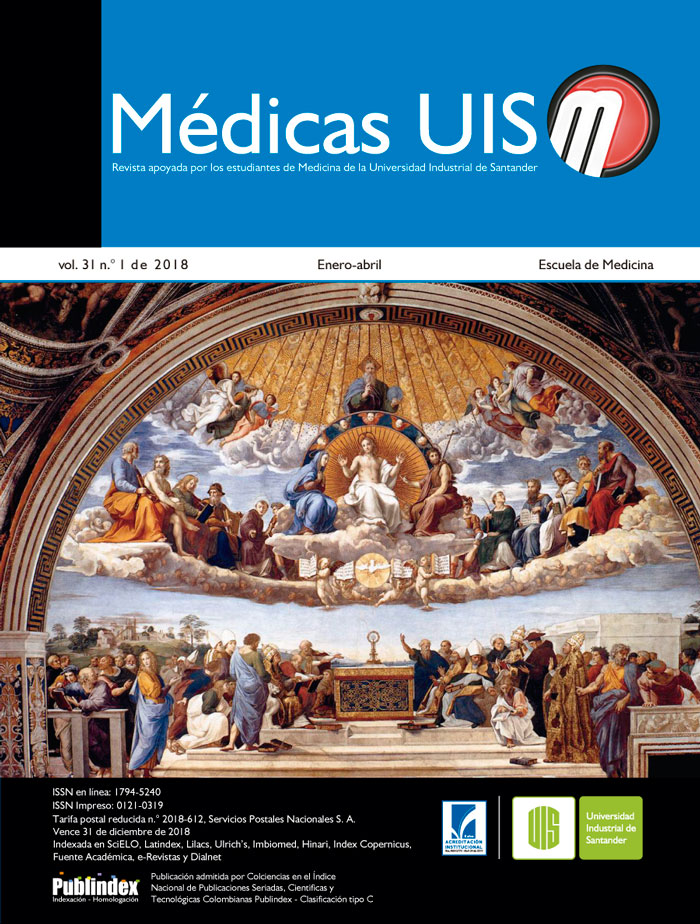Abstract
Unilateral pulmonary cysts are an unusual finding in neonates, from the point of view of the radiologist it is difficult to distinguish congenital pulmonary cysts from those acquired. The definitive diagnosis is histological. A 28-week premature neonate with respiratory distress syndrome is present in relation to multiple pulmonary cysts. The initial chest X-rays showed a solitary left pulmonary cyst. It required a staggered respiratory assistance, along with serial X-rays where the presence of pneumothorax and the increase in the size of the initial cystic lesion with the presence of new cysts was observed. Computed tomography confirmed the presence of solitary left lower lobe cyst and several collections of interstitial gas with central soft tissue points in relation to interstitial pulmonary emphysema and was raised as a differential diagnostic cystic adenomatoidea malformation. The lesion was surgically removed in view of clinical deterioration. Histology confirmed the presence of persistent interstitial pulmonary emphysema. MÉD.UIS. 2018;31(1):65-70.
References
respiratory disorders. A prospective study. Acta Paediatr Scand.
1981; 70(6):773-83.
2. Pérez-Rodríguez J, Elorza D. Dificultad respiratoria en el recién
nacido. An Pediatr Contin. 2003; 1(2):57-66.
3. Edwards MO, Kotecha SJ, Kotecha S. Respiratory distress of the
term newborn infant. Paediatr Respir Rev. 2013;14(1):29-36.
4. Solís G, Mantecón L. Tratamiento de los escapes aéreos en
neonatología. An Pediatr Contin. 2013; 11(6): 350-3.
5. Verma RP, Chandra S, Niwas R, Komaroff E. Risk factors and clinical
outcomes of pulmonary interstitial emphysema in extremely low
birth weight infants. J Perinatol. 2006; 26(3):197-200.
6. Vellanki H, Antunes M, Locke RG, McGreevy T, Mackley A,
Eubanks JJ, et al. Decreased incidence of pneumothorax in VLBW
infants after increased monitoring of tidal volumes. Pediatrics.
2012; 130(5): 1352-8.
7. Wheeler KI, Klingenberg C, Morley CJ, Davis PG. Volumetargeted
versus pressure-limited ventilation for preterm infants:
a systematic review and meta-analysis. Neonatology. 2011;
100(3):219-27.
8. Chalak LF, Kaiser JR, Arrington RW. Resolution of pulmonary
interstitial emphysema following selective left main stem
intubation in a premature newborn: an old procedure revisited.
Paediatr Anaesth. 2007;17(2):183-6.
9. Belcher E, Abbasi MA, Hansell DM, Ffolkes L, Nicholson AG,
Goldstraw P. Persistent interstitial pulmonary emphysema
requiring pneumonectomy. J Thorac Cardiovasc Surg.
2009;138(1):237-9.
10. Coto-Cotallo GD, López J, Fernández B, Álvarez F, Ibáñez A. Recién
nacido a término con dificultad respiratoria: enfoque diagnóstico
y terapéutico. En: Protocolos Diagnóstico Terapéuticos de la
Asociación Española de Pediatría: Neonatología. 2ª ed. Protocolos
de la AEP; 2008. p. 285-305.
11. Silverman GA. Escapes aéreos: Neumotórax, enfisema intersticial
pulmonar, neumomediastino, neumopericardio. En: Cloherty JP,
Stark AR. Manual de cuidados neonatales. 4ª ed. Madrid España:
Masson; 2005. p. 406-12.
12. Agrons GA, Courtney SE, Stocker JT, Markowits RI. From the
Archives of the AFIP: Lung Disease in Premature Neonates:
Radiologic-Pathologic Correlation. Radiographics 2005;
25(4):1047–73.
13. Donnelly LF, Lucaya J, Ozelame V, Frush DP, Strouse PJ, Sumner
TE, et al. CT Findings and Temporal Course of Persistent
Pulmonary Interstitial Emphysema in Neonates: A Multi
Institutional Study. AJR Am J Roentgenol 2003; 180(4):1129 –33.
14. Pantoja M, Camberos O, Arteaga R. Enfisema pulmonar
intersticial. Rev Soc Bol Ped 2005; 44(1): 36 –7.
15. Cleveland RH. A radiologic update on medical diseases of the
newborn chest. Pediatr Radiol 1995; 25(8):631–37.
16. Boothroyd AE, Barson AJ. Pulmonary interstitial emphysema: a
radiological and pathological correlation. Pediatr Radiol 1988;
18(3):194–99.
17. Stocker JT. Cystic Lung Disease in Infants and Children. Fetal
Pediatr Pathol 2009; 28(4):155–84.
18. Jabra AA, Fishman EK, Shehata BM, Perlman EJ. Localized
persistent pulmonary interstitial emphysema: CT findings with
radiographic-pathologic correlation. AJR Am J Roentgenol 1997;
169(5):1381–84.
19. Donnelly LF, Frush DP. Localized radiolucent chest lesions in
neonates: causes and differentiation. AJR Am J Roentgenol 1999;
172(6):1651–1658.
20. Gürakan B, Tarcan A, Arda IS, Coşkun M. Persistent pulmonary
interstitial emphysema in an unventilated neonate. Pediatr
Pulmonol 2002; 34(5):409–11.
21. Taylor G, Atalabi OM, Estroff JA. Imaging of congenital
diaphragmatic hernias. Pediatr Radiol 2009; 39(1):1–16.
22. Kuhlman JE, Reyes BL, Hruban RH, Askin FB, Zerhouni EA,
Fishman EK et al. Abnormal Air-Filled Spaces in the Lung.
Radiographics 1993; 13(1): 47-75.
23. Winters WD, Effmann EL. Congenital Masses of the Lung:
Prenatal and Postnatal Imaging Evaluation. J Thorac Imaging
2001; 16(4):196-206.
24. Journy N, Ancelet S, Rehel JL, Mezzarobba M, Aubert B, Laurier
D, et al. Predicted cancer risks induced by computed tomography
examinations during childhood, by a quantitative risk assessment

This work is licensed under a Creative Commons Attribution 4.0 International License.
Copyright (c) 2018 Revista Médicas UIS
